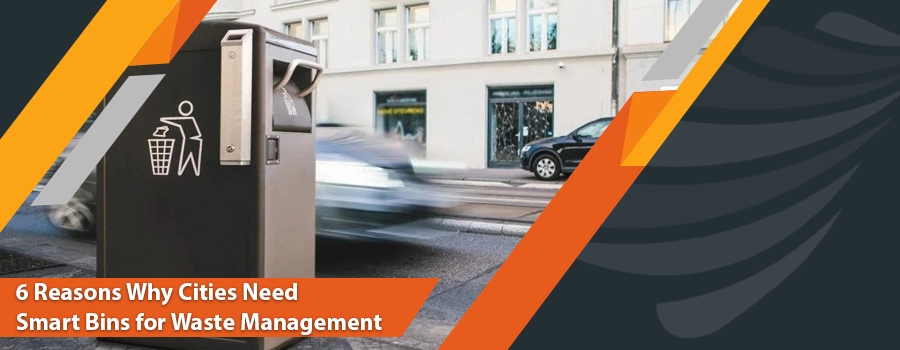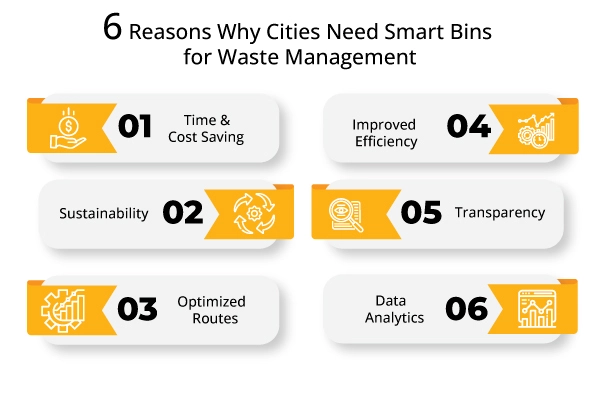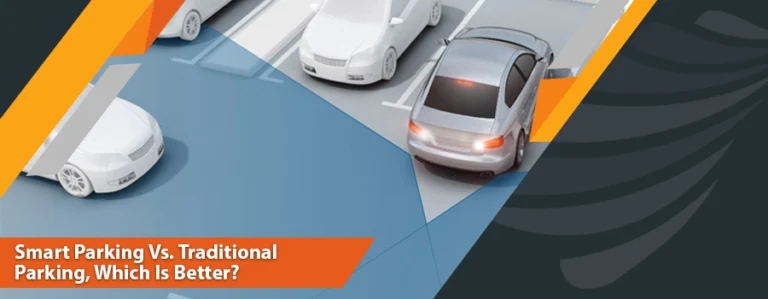The population of the cities worldwide is growing at an accelerating rate, imposing significant socioeconomic and environmental issues. One of the most critical issues in cities nowadays is the production of millions of tons of waste every day, and the cities do not have appropriate methods to manage waste properly. As per The World Bank, by 2050, global waste production will grow by approximately 3.40 billion tons, pushing the world to the edge of an alarming situation.
Cities are eagerly searching for solutions that can reduce the strain of waste management; in this regard, technology is the ultimate solution. Currently, one of the most advanced technological solutions that is gaining immense popularity is “Smart Bin,” which uses the Internet of Things (IoT) to provide a highly efficient way of managing waste.
The following article discusses how the smart bin solution is revolutionizing waste management and why cities need smart bins more than ever before.
Smart Waste Collection for Smart Cities
Nowadays, people embrace technology with both hands because technology makes work easier and smarter. Similarly, smart bin solutions make waste management extremely convenient. Smart Bins are equipped with ultrasonic fill-level sensors. With the help of IoT, the bin collects data from the sensors and sends the data to the cloud, which is then analyzed to provide useful insight. Based on the collected data and analyzed information, waste collectors can optimize their routes and frequency of emptying a filled bin.
Smart Bins have higher IQs as compared to average traditional bins. Smart bin complements the smart city vision as it automatically detects the fill level of the bin and alerts the facility managers so that they can empty that bin instead of taking rounds on the streets and manually looking for the filled bins.
Reasons Why Cities Need Smart Bins
With the combination of trash compaction technology and intelligent waste monitoring, smart bins are much better than traditional garbage bins. Cities can enjoy the following benefits if they start using smarter ways of waste collection.
1. Time and Cost Saving
The data collected from the smart bins provide a more convenient route displayed on the smart application. This application is used by the garbage trucks to reach the bins that are filled, thus, reducing time on the road and congestion on the streets. Additionally, with the help of remote diagnostic and IoT, there is no need to send the staff all the way to monitor the fill levels of the bin.
Waste generation is increasing daily, and cities are allocating more resources to waste collection. Smart bins eliminate unnecessary spending on waste management. This helps the cities to allocate resources to other important initiatives. Hence, it can be said that the use of smart bins can potentially save time and cost.
2. Sustainability
Overflowing bins significantly pollute the environment, potentially harm communities, contaminate areas, and negatively impact public health. Ordinary bins are already installed in many cities and they are lightweight, cheap, and easy to install but are not technologically smart enough to promote sustainability. Smart bin not only makes waste collection and handling extremely convenient but also helps in maintaining a garbage-free and sustainable environment for the public. The system of waste collection and the optimized route offered by smart bins eliminate the risk of overflowing along with minimizing the CO2 emission. By using smart bins, municipalities can minimize their overall carbon footprint and enable them to achieve SDGs.
3. Optimized Routes
Hundred and thousands of bins are installed in cities, and the waste management facilities send the garbage collection truck to each bin to check the fill levels, which is very tiring and hectic work. Smart bin, with the help of IoT, notifies the facility managers about the fill levels of the bin; for instance, the status of the bin can be empty, partially filled, filled or overflowing, etc. Hence, the managers only send the garbage collection trucks to empty the bins, which are either filled or overflowing. In short, the data collected from the smart bin offers optimized routes to waste collectors instead of wandering the road to check every bin. This results in less congestion on the streets, less CO2 emission, and fuel consumption.
4. Improved Efficiency
One of the most important visions of the smart city is to use the resources more efficiently, meaning achieving more by using the minimum amount of the resources. The benefit of using smart devices is the availability of information that allows the user to make better and quicker decisions. Likewise, the sensors in the smart bins tell the facility managers or the waste collectors the condition of the bin so that they can empty the bin in a specific area before it starts to overflow. The use of smart bins in cities can challenge the current waste hierarchy, breaking the patterns of high costs and inefficiency, which can ultimately improve the overall performance of waste management systems.
5. Transparency
The routes in the cities where the smart bins are installed are continuously monitored, eliminating the misuse of owned assets. For instance, traditional bins sometimes get stolen or damaged, but a replacement takes a lot of time. However, this is not the case with the smart bins. The system immediately notifies the facility manager if the bin gets damaged or someone is trying to steal it so that the management can take appropriate actions. Apart from this, the smart bin solution also alerts the managers if the bin falls or catches fire, offering complete transparency in managing the asset.
6. Data Analytics
Analyzing the data collected from the smart bin provides a clear understanding of how the company is performing in collecting and handling the waste. This way, the facility managers can manage the waste better based on data. For instance, the managers can get information about the efficiency of the collection routes and the areas in which the bins are filled frequently. With this information, the waste collectors can choose optimized routes to save time and fuel, and request the authorities to place more smart bins in the required areas, etc. Hence, it can be said that smart analytics help understands the measurement related to waste collection, monitoring, and infrastructure.
Conclusion
Smart Bins can lead the shifts toward a more sustainable future and justifies the vision of efficient waste collection in smart cities. It is perfect for areas with a large volume of human traffic, such as parks, academic institutes, malls, hospitals, etc. Cities are not required to install smart bins and forget about the traditional bins if they want to improve waste collection and recycling efficiency.






